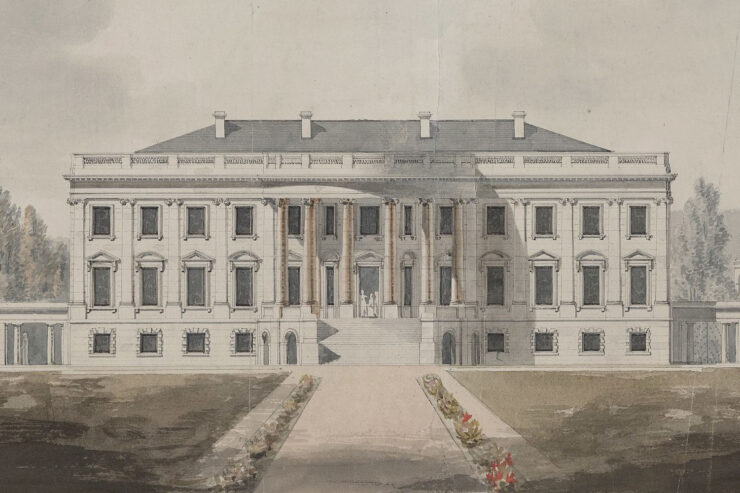There is a mandated United States presidential line of succession that determines who assumes the role of president in the event that the current officer holder is no longer able to serve, whether due to illness, death, resignation, or other misfortune. Thus far, a vice president has stepped in every time that a president required unexpected replacement. The presidential line of succession even takes into account the possibility that more than one person at the top of the list might suddenly find themselves unavailable1.
In addition to its obvious governmental utility, the line of succession can serve a useful narrative purpose in fiction, which is to indicate to readers precisely how deep in the crap the US finds itself2. If the new president is eight or nine positions down the list, something dramatic must have happened to remove everyone ahead of the new president. Since it’s very unlikely that people well down the list will ever be president, there’s no reason to select them on the basis of suitability for that role. The new president may prove very unpresidential indeed.
Perhaps examples would help.
Alas, Babylon by Pat Frank (1959)
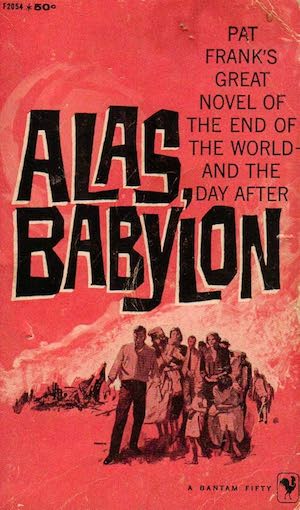
Suspecting Soviet perfidy, Colonel Mark Bragg sends his family to stay with brother Randy in Fort Repose, Florida. His precaution pays off. Although Mark is incinerated along with the rest of Omaha, Helen and children Ben Franklin and Peyton survive. Fort Repose is too insignificant to nuke and chance spares Fort Repose the fallout that blankets so much of the US.
Although the American government was as suspicious of the USSR as Mark, the precise timing of the exchange could not be predicted and was a nasty surprise3. Therefore, the most senior member of the administration not in Washington was Mrs. Vanbruuker-Brown, former Secretary of Health, Education, and Welfare.
Author Frank was inspired to underline the serious consequences of nuclear war after a real-life incident. Frank estimated that a nuclear exchange might kill fifty or sixty million Americans. His friend’s response was “Wow! Fifty or sixty million dead! What a depression that would make!”
Among the details selected to drive home what that meant, a very junior official becomes president. President Vanbruuker-Brown does, however, rise to the occasion.
The Gold at the Starbow’s End by Frederik Pohl (1972)
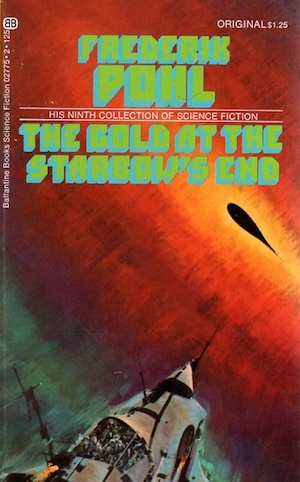
Dr. Dieter von Knefhausen has a simple, obvious solution to the many problems plaguing America and its president. Assemble a small team of America’s brightest, isolate them on a sublight journey to a planet that does not exist, and miraculous breakthroughs are certain to ensue. It’s a scheme so obvious, it is a wonder nobody has ever tried it before.
Knefhausen’s scheme succeeds beyond his wildest nightmares. The crew of the starship Constitution do indeed achieve unparalleled insights… including how to express their displeasure at being sent on what they now see was a suicide mission. Thus, by the end of the novella, the president that approved the mission is long gone and the current president is a forgettable nobody who just happened to be in the right place at the right time to ascend the line of succession to the Oval Office… at least until the rising seas submerge Washington.
The Gold at the Starbow’s End also qualifies for a possible essay on “Five Stories That Are Extremely 1970s, Specifically Mid-Nixon Era.”
Systemic Shock by Dean Ing (1981)
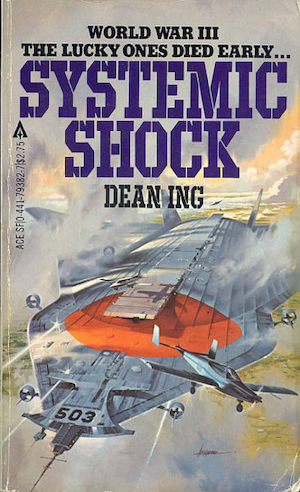
Aware that the world was lucky to have survived World War Three with the loss of only two cities to nuclear doom, the US response to Sino-Indian provocation was to spare governments but target granaries. Thanks in part to a last-minute unrequested assist from the Russian Union of Soviets, the attack was so wildly successful that India had but two options: accept humiliating terms to avoid famine or launch a combined attack with their Chinese allies against the US and its allies. India chose the latter.
Under the circumstances, US defense against the nuclear barrage that followed was surprisingly successful. It was not so successful that the president long survived approving the attack on India. Thus, Speaker of the House Hyatt is elevated to President Hyatt.
Among the many remarkable preparations made by the US for nuclear war in the novel is the means by which a national presidential election could be successfully conducted despite the distraction of the deaths of forty percent of the population. Thanks to the impressive robustness of American elections, even under these circumstances, Hyatt is only president until the 1992 election, at which point he loses to president-elect Yale Collier.
Trinity’s Child by William Prochnau (1983)
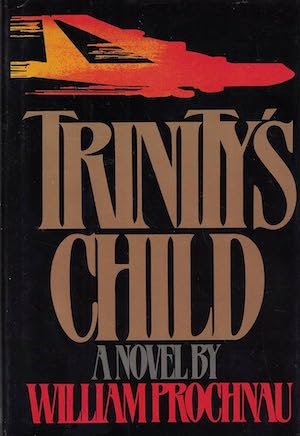
The Soviet premier has a bold plan to free the world from the never-ending fear of impending nuclear doom. Step one: launch a surprise attack on the US’s nuclear arsenal. Step two: point out to the president that of the three possible US responses (do nothing and accept the damage, retaliate proportionately, or launch a full-scale retaliation), the first two options limit the deaths to a few million, while the third would kill billions. Since the president can hardly be expected to let someone murder millions of Americans, the president gives an order to respond with option 2.
Unfortunately for the Soviets, in the chaos that follows the attack the current president is thought dead. Washington being in flames, the only successor known to be alive is the Secretary of the Interior. The Secretary of Interior is many things, but coldly rational is not one of them. Civilization seems doomed, unless the surviving military personnel get very creative.
With all due respect for people with nuclear anxiety, the only reason that the premier’s plan isn’t the stupidest idea I’ve ever encountered is because the production of stupid ideas is an extremely competitive field. Among the many obvious issues, it assumes that the US would have the operational flexibility to assess the attack and respond proportionately in the minutes before the missiles arrive.
The Calculating Stars by Mary Robinette Kowal (2018)
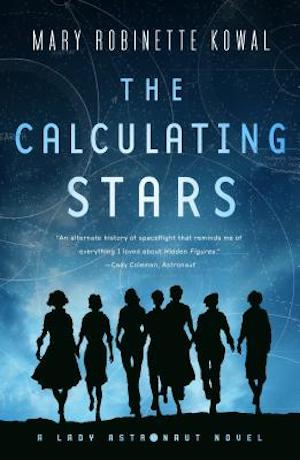
President Dewey beat Truman in 1948. Now in 1952, he will be the incumbent fending off a challenger. Or at least, Dewey would have been, had a meteorite not incinerated Dewey, along with anyone unlucky enough to be within hundreds of miles of Washington, DC.
Conveniently for America… or what remained of it… not every member of Dewey’s administration died in the disaster. Secretary of Agriculture Charles F. Brannan survived. But the crisis facing the US, and the Earth itself, may prove more than any one man, no matter how lucky, can manage.
This is another novel in which apocalypse does not prevent a timely US election. I work for Elections Ontario and Elections Canada from time to time. Despite my tremendous enthusiasm for both, I suspect that extinction level events such as global thermonuclear war or giant meteor impact would pose some significant operational challenges for elections.
Note the absence of works in which the calamity winnowing presidents and the line of succession is an epidemic of disease. I was sure one of the classic pandemic books—The Earth Abides, The Stand, Some Will Not Die, The Scarlet Plague—would have offered a sequence of presidents succumbing to the plague to show how serious it was… but every possibility I checked lacked that detail. Surely there must be one?
- The authors of the 25th Amendment (adopted in 1967) might have had in mind the fact that presidential assassin Booth’s co-conspirators tried to kill Vice President Andrew Johnson as well as Secretary of State William H. Seward. The possibility of nuclear war was also likely a consideration for the authors of the amendment, the Cuban Missile Crisis being a recent event. ↩︎
- If the US finds itself in deep shit, the outcome of the disaster could have global consequences, a plus for any author seeking reader interest. You could write a novel about Canadian prime ministerial succession, but not only is the process of replacing a PM now face down in his soup less dramatic, it’s less likely to be globally consequential. No disrespect intended to the late, fatally overworked Prime Minister Sir John Thompson or to the lamentable timing of his sudden demise. ↩︎
- The timing of the apocalypse in Alas, Babylon was accelerated by an accident; a Sidewinder missile hit the wrong target at the worst possible time. ↩︎










